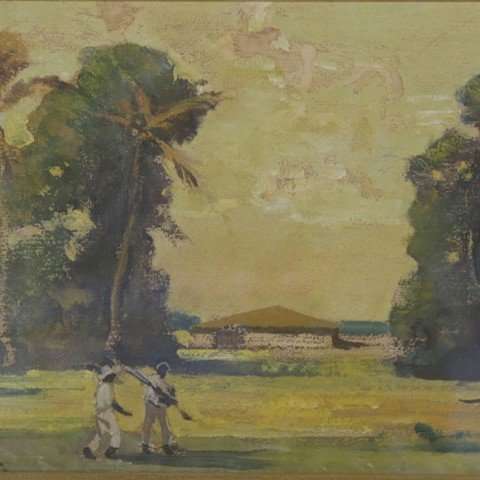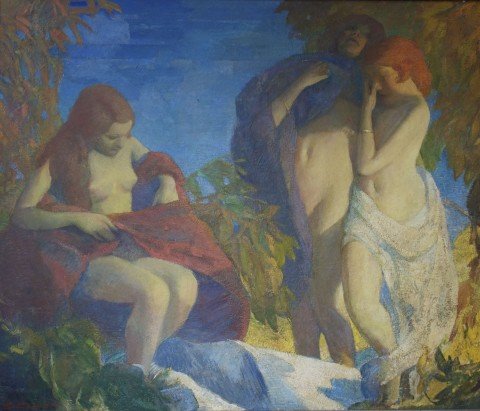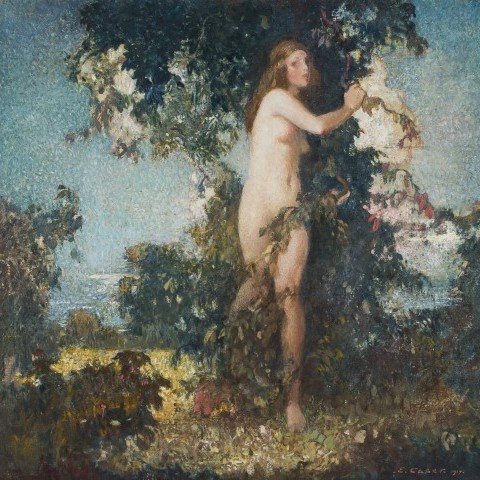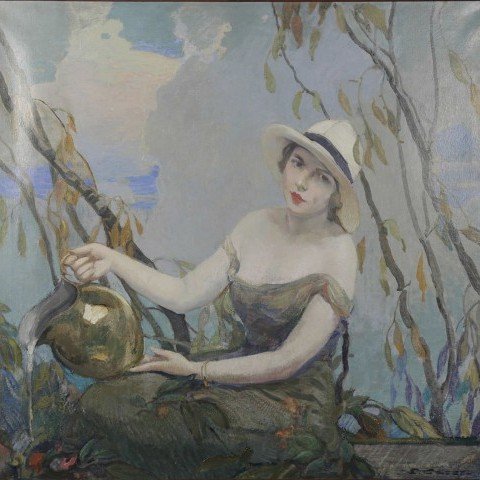Born in Venice, Italy, Caser was an etcher, decorator and painter of the figure, landscape and marines. He studied at the Art Academy in Venice with Ettore Tito and M. de Maria. He was interested in old master techniques and his style and subject matter reflect the Venetian tradition. While researching in the Venice archives, he uncovered a recipe for Tintoretto's medium. He and Charles Hawthorne experimented with the formula in Venice (1906-07) and it was later commercially produced in the United States under the name "Hawthorne Medium." Some sources indicate that Caser came to the United States in 1908, but H. Dudley Murphy claimed that he met Caser in Italy in 1914 and induced him to come to the United States to work. Caser worked in Murphy's studio in Winchester for some time, and did the decorations for the Ginn Estate in Winchester during this period. He then moved to Chicago where he continued his decoration work. Caser returned to Italy during World War I where he served in the army and received the War Cross for distinguished service. After World War I he settled in New York City. He decorated the dining room for the Engineer's Club in New York City, and did the decorations for the Peoples Savings Association in Toledo, Ohio. Caser won a silver medal at the San Francisco Exposition, 1915; a silver medal at Rimini, Italy; and the Thomas B. Clark Prize at the National Academy in 1929 for "Fruits of the Earth." An exhibition of his work was held at Grand Central Galleries in 1929 where a memorial exhibition of his work was held in 1945.
The text of a brochure for a memorial exhibition in honor of the artist reads as follows:
With the opening of the Memorial Exhibition to Mr. Ettore Caser, the public will see his work in something of its entirety and continuity.
Mr. Caser was a Venetian and the glory that was Venice ever held him enthralled. He had a profound knowledge of the methods of the Old Masters and of their techniques. Throughout his canvasses will be found qualities of texture and color such as can only be produced by these ancient methods.
Caser had an insatiable enthusiasm for painting. He had a child-like simplicity and gave forth a warmth of friendliness but with an almost timid reserve. His six years at the Conservatory of Music in Venice proved a valuable asset, for there are musical qualities and an ever-present gaiety in his imaginative and decorative canvasses.
John Singer Sargent while working on his Boston Museum decorations, made several trips to see the self-portrait of Caser in the home of H. Dudley Murphy in Lexington, Mass. Mr. Murphy, a famous American artist, persuaded Caser to come to this country, and helped to establish him in Winchester. His work was well received both in Boston and Chicago and resulted in commissions for decorations in many homes, including the famous Ginn Estate in Winchester.
During the first World War he paid his own fare to Italy and back after fighting for three long years in the Alps for his native Italy. When he returned to America, he became a citizen.
Caser is represented in the National Bank in Toledo, Ohio, by a huge mural which has for its theme: "Anthony Wayne and the Indians at the Marmoux River"; also here in New York he has four twelve-foot murals at the Engineer's Club, as well as a picture at the Salmagundi Club, and the Boston Art Club. Among his prizes were a Silver medal at San Francisco World's Fair, the W. A. Clark Prize at National Academy and others.




